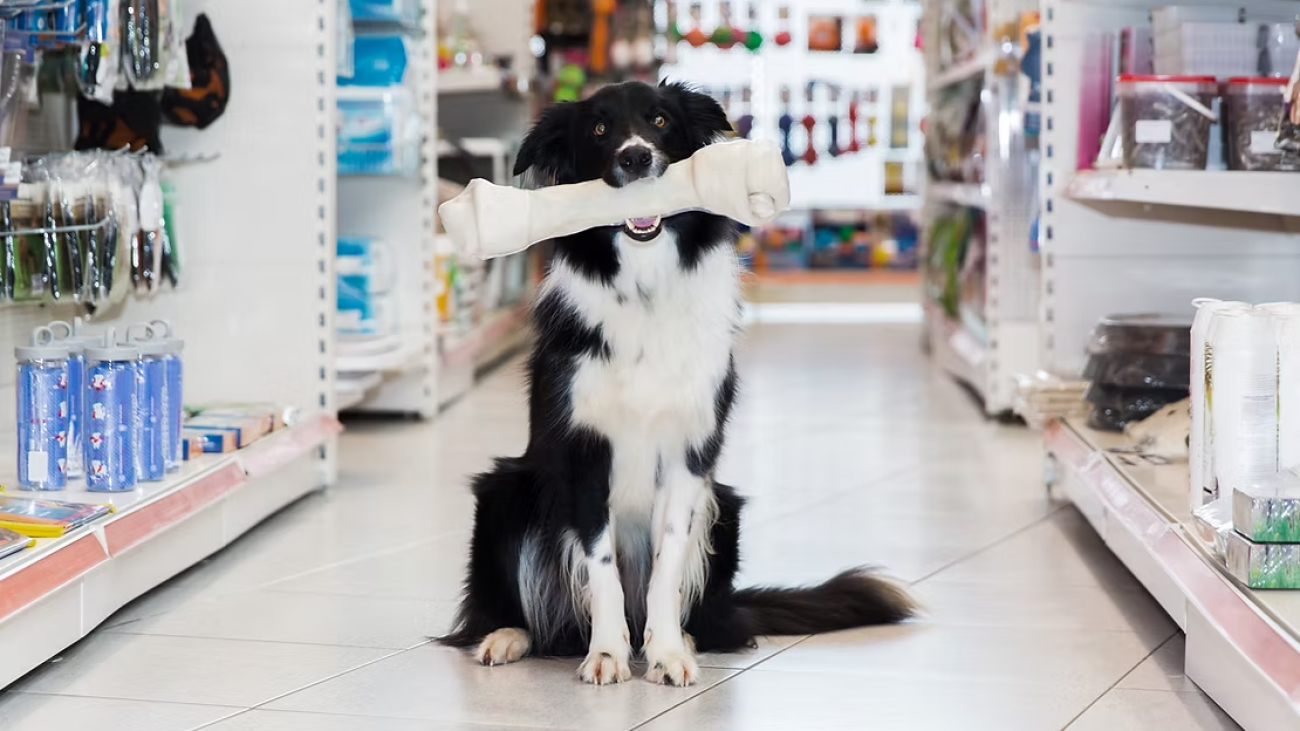If you’ve ever tried to pick out a chew for your dog, you know how quickly it turns from a fun shopping trip to a full-blown research project. One article says this chew is a must-have. The next says it’s dangerous. Cracked teeth. Choking risks. Tummy trouble. It’s enough to make you want to toss your laptop out the window.
It’s that classic “damned if you do, damned if you don’t” feeling that so many pet parents know well.
But here’s the thing: chewing is essential for dogs — not optional. It’s not just a way to keep them busy while you’re on a Zoom call. Chewing supports everything from dental hygiene to emotional well-being. It’s a need, not a luxury.
And when you start looking at chews through that lens, it gets a whole lot easier to cut through the noise and focus on what really matters.
Why Chewing is So Important for Dogs
Chewing is more than a habit — it’s a natural, instinctive behavior that’s deeply fulfilling for dogs. It helps them process energy, self-soothe, and exercise their minds and jaws.
There’s even science to back it up: chewing releases endorphins — natural feel-good chemicals that help reduce stress and anxiety. That’s why dogs often gravitate toward a chew when they’re feeling overwhelmed or overstimulated.
And let’s not forget about dental health. Chewing helps scrape away plaque and tartar, which reduces the risk of gum disease and supports healthier teeth. Think of it like nature’s toothbrush — without the awkward struggle of trying to hold a toothbrush in your dog’s mouth for 30 seconds.
Yes, All Chews Have Risks — But Don’t Let That Stop You
Let’s be real — every chew comes with some risk. Some are too hard and could damage teeth. Others are a choking hazard. Some can be too rich and upset your dog’s digestive system.
And yet, that doesn’t mean you need to avoid chews altogether. It just means you need to choose wisely, supervise appropriately, and be realistic about your dog’s chewing habits.
And by the way, supervision doesn’t mean helicoptering over your dog the entire time they chew. It means using common sense. If your dog’s working on a dense chew like a marrow bone or an antler, it makes sense to be nearby. But if they’ve got a stuffed KONG or a beef cheek roll they’ve handled well before, you’re probably safe heading out for a quick errand.
It’s about calculated risk, not paranoia.
Short-Lasting Chews: Small but Mighty
Not every chew needs to last an hour. Short-lasting chews can be incredibly effective — especially for enrichment, dental hygiene, and redirecting energy in a meaningful way.
Jerky treats – chewy, satisfying, and a step up from your everyday cookie.
Fish skin – light, crispy, and naturally abrasive for scrubbing teeth.
Pig ears – a classic chew that’s flavorful, crunchy, and satisfying for most dogs. They’re a great middle-ground option — not too hard, not too soft.
Chicken feet and turkey necks – nutrient-dense, fully digestible soft bones that are excellent for oral health. Their unique texture helps clean teeth and even floss between them.
Also — short-lasting chews are perfect if you’re someone who likes to hand out the occasional “just because” treat. Instead of tossing another biscuit, why not give your dog something with real purpose behind it? A chew that cleans their teeth, supports their joints, and satisfies their instinct to gnaw? That’s a treat worth giving.
Long-Lasting Chews: For Focus and Fulfillment
Then there are the chews that are meant to last — the ones that give your dog something to really dig into. Long-lasting chews provide deep enrichment, help dogs settle down, and create that calming, focused chewing state that many dogs crave.
Some popular options include:
Bully, Tendon, or Collagen sticks
Yak chews / Himalayan cheese chews
Beef cheek rolls
Frozen KONGs or treat-stuffed toys
Marrow Bones
Cow Hooves
Antlers
Nylon Chews
Dog-Safe Wood Chews
Just remember: not all dogs are suited for all chews. Hard bones and antlers might be too much for puppies or dogs with dental issues. That’s where knowing your dog — and supervising smartly — makes all the difference.
Moderation Makes It All Work
Here’s the secret sauce: balance. Chewing should be part of your dog’s life, not their entire life. Too much chewing — especially if it’s the same thing every day — can lead to worn teeth, gum irritation, or upset stomachs.
It’s better to rotate chews throughout the week, mix up textures, and integrate chews into your dog’s broader enrichment routine. Think of them as one piece of the puzzle — alongside sniff walks, puzzle toys, training games, and play.
When used mindfully, chews become more than a treat — they become a tool for better behavior, better health, and a better bond with your dog.
Final Thoughts: Trust Yourself — You’re Doing Great
There’s no such thing as the “perfect chew.” And that’s okay. You don’t need perfection — you just need thoughtful, balanced choices that work for your dog, in your home, with your lifestyle.
So don’t let the online horror stories scare you off. Choose intentionally, supervise wisely, and remember: you’re already doing the best thing for your dog by simply caring enough to learn.
You’ve got this — and your dog’s happy, healthy, chew-satisfied tail wag is all the proof you need.


